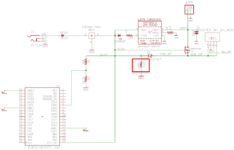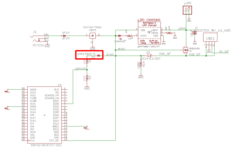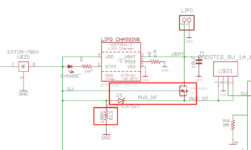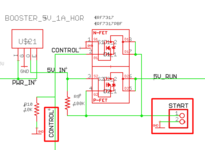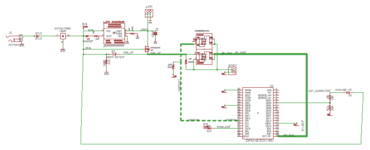igeorge
Member level 5

Hello,
I have to feed 3.3vdc to an esp32 pin.
The regular voltage divider will work, but unfortunately I have another resistor already there, R19=100K
I put a divider, but I am not sure if it will be OK or not, and what to do.
I do not want to use another 3.3 volts regulator.
As an alternative, on the second picture I am thinking to put a 1n4148 as isolator.
On the pictures, I eliminated 90% of the schematic to make it simpler to read.
What do you suggest ?
I have to feed 3.3vdc to an esp32 pin.
The regular voltage divider will work, but unfortunately I have another resistor already there, R19=100K
I put a divider, but I am not sure if it will be OK or not, and what to do.
I do not want to use another 3.3 volts regulator.
As an alternative, on the second picture I am thinking to put a 1n4148 as isolator.
On the pictures, I eliminated 90% of the schematic to make it simpler to read.
What do you suggest ?
